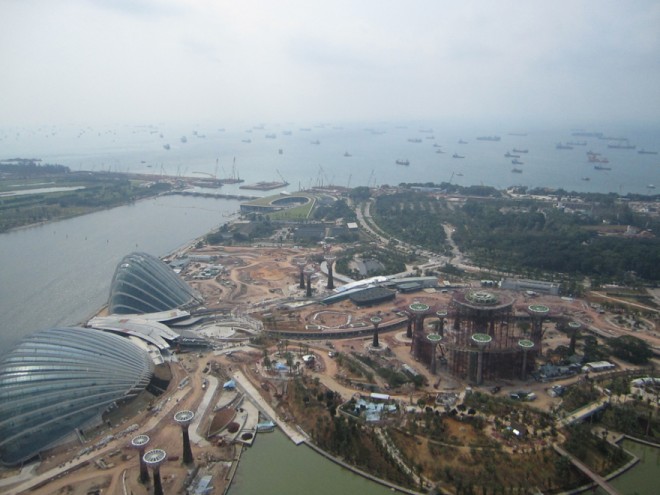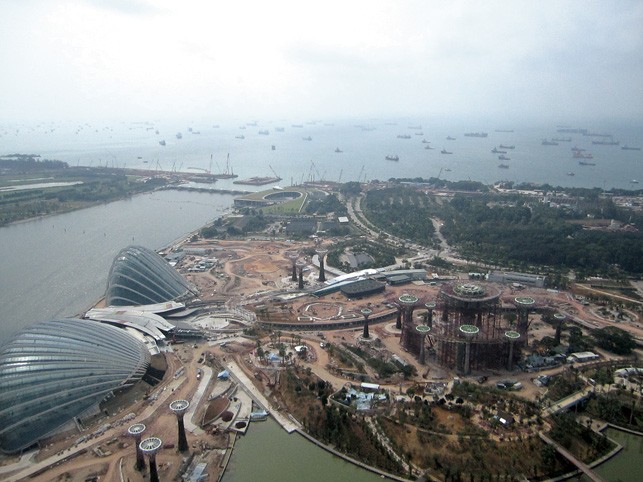From the Series
First Published in
If you’re reading this you are probably part of the third of the world’s population that can easily access food by simply walking into a shop or restaurant.
Most of us give little or no thought to the process that brings the food to where we want it, when we want it. Food has become disassociated from where it is produced, resulting in what architect and food urbanist Carolyn Steel calls the “paradox of urban life”.
Steel’s book The Hungry City outlines the contemporary urban food crisis, identifying how and why we landed up here, and what the real cost of our consumption habits are to the planet. Looking to possible solutions, Steel argues that we need to rethink and revalue food by implementing an infinite variety of more sustainable food systems.
“We’ve completely lost touch with food and where it comes from,” says Steel. It’s this lack of involvement that has resulted in large-scale ignorance about the intensive process of producing food and transporting it to the urban centres where it is consumed. “A very important part of the problem is that supply is no longer connected to demand and that, increasingly, we see chronic over-consumption and tons of food being wasted.”
For Steel, the problem starts with the fact that a city like London, for example, consumes 30 million meals every day. But the process whereby this is made possible is neither equitable, nor sustainable. And this is true for almost all cities across the world.
The complexities of the contemporary urban food crisis can be traced back some 160 years, to the advent of trains. Steel explains that for the larger part of human history people had settled close to their source of food. Communities and societies developed close to the harbours, markets and other locations where food was being produced. But then the Industrial Revolution brought trains and more sophisticated forms of transport, and it became no longer necessary for people to live close to where food was grown.
The arrival of trains meant that for the first time in history, food was being disregarded in urban planning, simply because trains could bring the food into the city. So food and cities have evolved separately, says Steel, and the result has been a disaster.
The extent of the disaster is best understood when considering the figures. Annually some 19 million hectares of rainforest is lost to agriculture while another 20 million hectares of existing arable land is lost to salinisation and erosion. It takes 10 calories to produce every one calorie of food we consume. A billion people worldwide are obese while another billion are starving, yet half of all food produced in the USA is thrown away.
Adding further complexity to the problem is the fact that large, profit-driven, corporations essentially control every link in the food chain. More often than not these corporations are not paying enough attention to sustainable practices, partly because consumers aren’t demanding it of them. For years now we’ve paid very little attention to locality and seasonality because cheap oil meant that one could easily enjoy Spanish avocados in South Africa or Brazilian nuts in Dubai. But as we head closer to peak oil, the ever-increasing fuel price makes this practice wholly unsustainable, Steel elaborates.
Despite improved farming methods and more sophisticated technology, agriculture is no more sustainable today than it was in the 1900s. Steel speaks of the “slash and burn” farming methods that pay little heed to the loss of soil fertility and the depletion of aquifers.
The problem is simple enough, we must all eat. But, says Steel: “We need to start urgently looking at the potential of food to shape the world in a better, more equitable way.”
Therefore Steel proposes “sitopia”, from the Greek word “sitos” meaning food and “topos” meaning place. Sitopia is simply about recognising the all-important role food has to play in our lives, and adopting it as central to a philosophy that drives a new social and urban vision.
While there is no silver bullet for this problem, for Steel the solution lies in the development of an infinite variety of systems. This starts with seeing cities as organic entities that are heavily reliant on natural ecosystems.
“What if urban communities could devise a system that allows them to connect directly to the source of food?” Steel asks. Where the stranglehold of the corporate system can be bypassed, or serve as nothing more than a silent regulatory body that overlooks a self-supporting system.
It’s encouraging to know that community-based food projects are happening in cities across the world. Steel says she regularly sees everything from urban vegetable gardens to community-led food trading projects. By becoming co-producers, Steel explains, the value of food can be highlighted and the inherited knowledge of a specific food type, territory or growing process can be protected and sustainably adapted.
Better-integrated urban planning systems also need to consider how the city is fed. “Food needs to consciously move to the core of planning systems,” Steel insists. Every aspect of planning needs to look to food as part of an integrated strategy. Steel is calling for a food map to be developed to help promote this shift from a fantasy about accessible and abundantly available food to the reality of the situation.
While it’s true that we require “nothing short of a revolution in terms of food evolution” to realise a type of sitopia, there are systems, plans and ideas slowly being implemented across the world. This, Steel explains, needs to be scaled up to the point where our very understanding of what it means to live on Earth is influenced by food, in terms of daily habits, socio-economic structures, cultural understanding and value systems.










